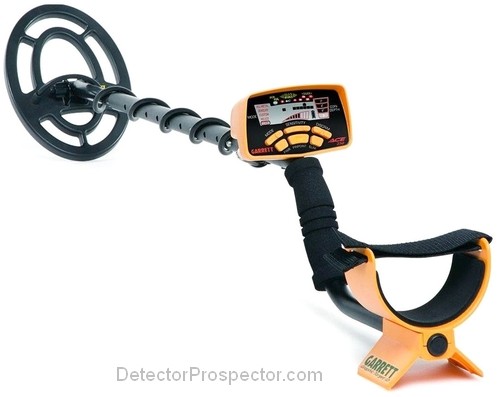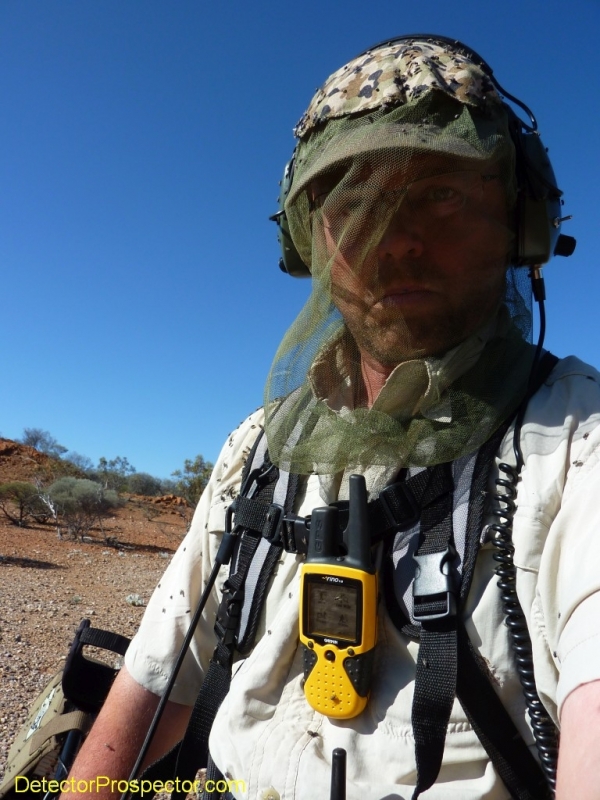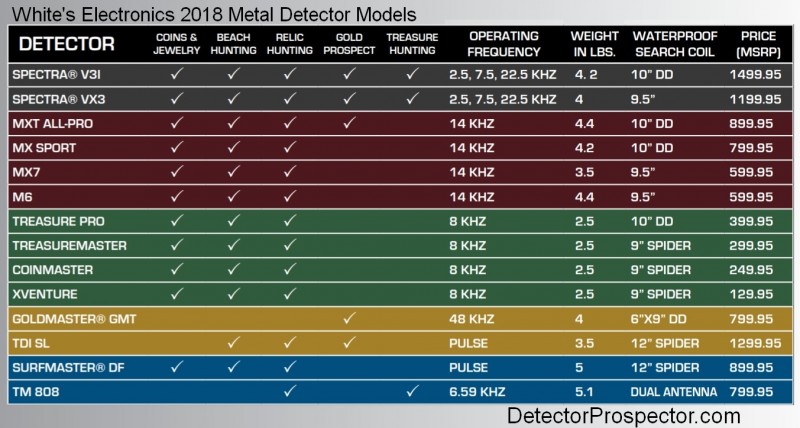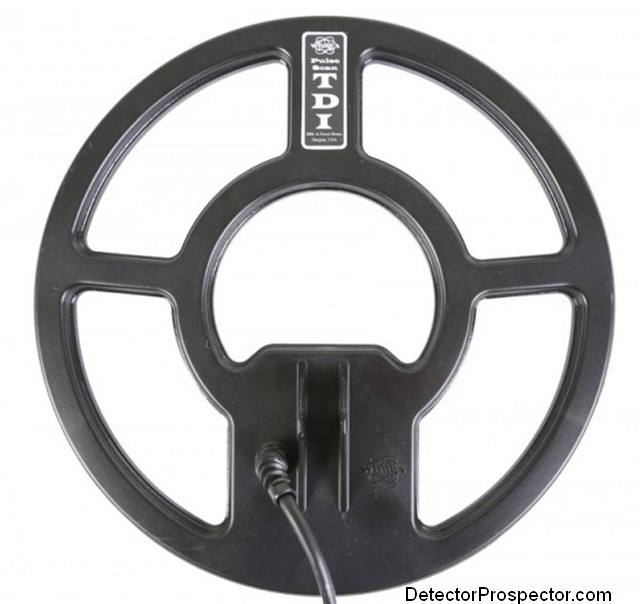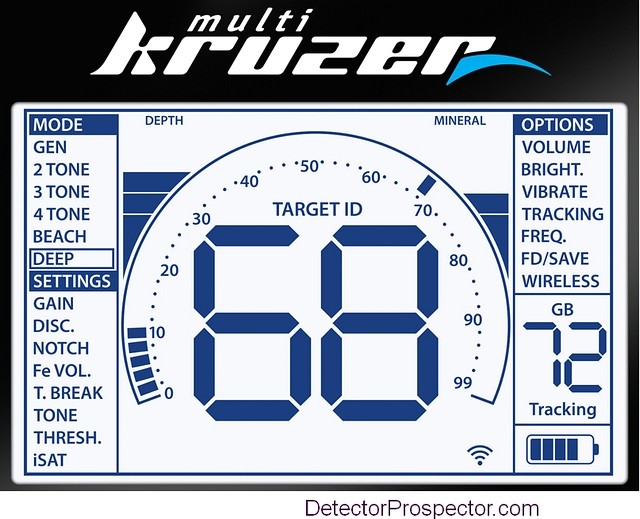-
Posts
19,790 -
Joined
Content Type
Forums
Detector Prospector Home
Detector Database
Downloads
Everything posted by Steve Herschbach
-

Minelab Equinox Software Update
Steve Herschbach replied to ChitownDigger's topic in Minelab Equinox Forum
People were having issues getting the updates to load, and so this is very likely an update to the updater, not the firmware itself. The latest firmware as Jackpine notes is still 1.7.5 -
Short answer - no. https://www.detectorprospector.com/forums/topic/1599-gb-numbers-mineralization/
-
"Some stories are worthy of being told more than once. There are countless stories about lost or buried treasure in Nevada history. Most of these are legends that might or might not have any basis in fact. The following story, however, is one of the rare cases where a real treasure was found, when there was no previous knowledge it even existed." Full Story Here
-
Welcome to the forum and thanks in advance for participating!
-
Nope, good reminder for people as honestly I thought they would all be gone by now.
-
It is a deal for sure, going on since September. I kind of assume they are clearing existing stock, since the whole Jimmy Sierra thing is long since dead and over. Presumably the stock will run out at some point. White’s Sierra Gold Trac (SGT) Data & User Reviews
-

Ace 250 Owner Finds A Gold Coin!
Steve Herschbach replied to Steve Herschbach's topic in Garrett Metal Detectors
There is some misunderstanding about frequency. The old rule was lower frequencies are more sensitive to high conductors like silver, and higher frequencies more sensitive to low conductors like gold. The reality is more complicated. Air tests reveal that higher frequencies are just more sensitive, period. In particular, the higher the sensitivity, the hotter a detector is on smaller targets. The catch is higher frequencies light up and see ground mineralization that a lower frequency will ignore entirely. The way I look at it is boosting frequency increases sensitivity across the board. However, in areas with mineralization, a high frequency can generate so much ground response that depth starts to suffer. The machines get chatty or outright noisy, and sensitivity may have to be reduced to compensate. A 71 kHz Fisher Gold Bug 2 air tests like crazy on all targets. Yet in bad ground the machine lacks any real depth and if not ground balanced it is horrible. A very high frequency detector with a preset unadjustable ground balance would be a very bad idea. The lower frequencies do very well on high conductors while also inherently ignoring milder ground mineralization. This in turn means the preset ground balance covers a wider range of conditions well, as compared to a high frequency machine, which has more need to be spot on. This double whammy, lower frequency being good for most types of coins, while also working well and quietly over a wider range of ground types, means nearly any detector with a preset ground balance is going to be running under 10 kHz in the single digits. There are many in the 6 kHz to 8 kHz range, with 6.59 kHz and 7.8 kHz being particular common. The Ace 200 (and Ace 250) is 6.5 kHz, Ace 300 is 8 kHz, and Ace 400 rather hot at 10 kHz. -
Lots of people had it done by the factory but few seem to have tackled it on their own. I was fine with the Vaquero as shipped.
-

White's Dual Field Search Coil Patent
Steve Herschbach replied to Steve Herschbach's topic in White's Metal Detectors
There was nothing to resolve. The Dual Field is a hotter coil. Hotter in small gold but that also means more reactive to ground. Turns out the Dual Field was a little too hot for the worst Australia ground, so they went regular mono for the Oz machines. I never had issues with the dual field coils and most people don’t. I loved the little 7.5” dual field. Even in Australia there is plenty of ground you can run the dual field on with no problem. I would not opt for a mono on ground capable of handling the dual field. Everything in detector land is a trade, and while the mono is less reactive to ground it is also less sensitive to small gold. -

Ace 250 Owner Finds A Gold Coin!
Steve Herschbach replied to Steve Herschbach's topic in Garrett Metal Detectors
Absolutely! I sure am not asserting an Ace is as good as a high end machine per se. The thing is the vast majority of people are going to be casual detectorists, and much of the country has far lower mineralization than in the mountain areas. These detectors have a preset ground balance that serves just fine for normal coin detecting. Nugget detecting? I would not bother, though I know of a nugget or two found with an Ace. Not small ones either - they can’t detect the tiny ones. -

New Gold Monster Headphones Coming Out
Steve Herschbach replied to Goldseeker5000's topic in Minelab Metal Detectors
They are not for sale on the DetectorPro website or anywhere else. Are these going to be for sale or not? Or is it a contact for special order thing? Price? Not getting them myself but I am sure others want to know. -

Ace 250 Owner Finds A Gold Coin!
Steve Herschbach replied to Steve Herschbach's topic in Garrett Metal Detectors
I have to admit I love it when somebody scores with an inexpensive detector. These little units are 100 times better than what I started with 45 years ago and don’t deserve to be looked down on as much as they are by some detectorists. The Aces are great detectors... the Ace 250 was a price/performance stunner when it was released. There is no reason for most people to sink big bucks into detecting. Even entry level units are very good these days, and backed with research of good locations and a knowledgeable operator these detectors can do surprisingly well. -
A hot rock by definition is different than the ground around it. You balance to the general ground content. The rock has different properties than the ground, so it beeps. Or you ground balance to the hot rock.... now you are out of balance with the general ground. So if you are balanced to the ground, and there is a rock that beeps, you can either lower sensitivity until it stops beeping (hot rocks usually fade far faster than metal objects when sensitivity is reduced) or you can leave sensitivity high and notch them out. Certain single frequencies may also eliminate them. There is no rule per se since hot rock situations differ. This is the realm I normally live in and so go into it all in detail in the following threads.... https://www.detectorprospector.com/forums/topic/7468-my-tips-on-nugget-detecting-with-the-minelab-equinox/ https://www.detectorprospector.com/forums/topic/1599-gb-numbers-mineralization/
-
Welcome aboard!
-

Merry Christmas And Happy New Year
Steve Herschbach replied to Nokta Detectors's topic in Nokta / Makro Metal Detectors
Merry Christmas Dilek and I am sure I speak for many when I wish you and everyone at Nokta/Makro a very happy 2019! -
-

Nokta Fors Series Discontinued
Steve Herschbach replied to Steve Herschbach's topic in Nokta / Makro Metal Detectors
It only sucks if it breaks, and only then if you can't get parts.... which has not happened and never may. Lots of people own and use detectors that are not made anymore so no reason to worry much about it. The Relic is a nice detector. Nokta/Makro has been playing catch up and so model introductions were very rapid, too rapid for many people. I do think that will slow down now because at this point Nokta/Makro has caught up with or even surpassed most of the competition. Forging ahead will prove more difficult as they are now at the cutting edge, where advancement comes more slowly. -
All the current White's metal detector models have now been added to the Metal Detector Database with User Reviews. If you have owned any of these White's models please help others by leaving a review. Discontinued White's models will be added in the future. For an explanation of the Metal Detector Database with User Reviews visit this link
-
As introduced on the White's pulse induction detectors beginning in 2008. https://patents.google.com/patent/US7994789 Abstract A new dual field search coil for pulse induction metal detectors has multiple coplanar wire coils of different diameters connected in series with the output of a pulse source, overcoming the loss of target size resolution associated with a single coil search loop. Small objects are sensed by an internal small coil and larger objects are sensed by the larger outside coil, and the overall depth of target sensing remains similar to that of a single coil construction. The smaller coil is isolated from the pulse source by the inductance of the larger coil and will ring at a frequency determined by its own parameters. To prevent the smaller coil from ringing, a second damping resistor is connected across the terminals of the smaller coil at the junction of the large and small coils making up the modified search loop. White's Dual Field Search Coil
-
Bounty Hunter - got a good start Fisher - all current models listed Garrett - all current models listed Minelab - all current models listed Nokta/Makro - all current models listed Rutus - Alter 71 listed Teknetics - almost done Tesoro - all current models listed White’s - all current models listed XP - Deus and Orx listed
-

Epic Seated Dime Cache Dug
Steve Herschbach replied to Cal_Cobra's topic in Metal Detecting For Coins & Relics
Burn areas of any sort trouble a metal detector. Heating rocks or dirt actually realigns the magnetic particles and can change the nature of the material. From this post: Maghemite (gamma ferric oxide) is an earthy iron oxide mineral found in most soils and some rocks. Red iron rust is a form of maghemite with which everyone is familiar. Maghemite is formed by the oxidation of lower oxidation state iron minerals such as magnetite, free iron and pyroxene. The oxidation commonly happens through weathering and exposure to fire. Maghemite is usually reddish brown or red in color, and even in low concentrations its color tends to dominate the material it’s in. Like magnetite, maghemite has high susceptibility. It differs from magnetite in having a substantial loss angle, causing it to ground balance in the range of 40 to 80% of full scale on most metal detectors and under most conditions. Why Equinox Is Special -
All the current Nokta/Makro metal detector models have now been added to the Metal Detector Database with User Reviews starting on page 3. If you have owned any of these Nokta/Makro models please help others by leaving a review. Discontinued Nokta/Makro models will be added in the future. For an explanation of the Metal Detector Database with User Reviews visit this link Nokta/Makro Multi Kruzer LCD display
-
The Nokta/Makro CF77 Coin Finder was introduced in 2013 and is still in production. The CF77 is a 17.5 kHz VLF metal detector aimed primarily at coin, jewelry, relic, and gold nugget detecting. "CF77 metal detector lets you easily detect gold, single coins, jewelry, relics and other tiny objects in areas that you could not hunt before. The detector does this by providing a stable and deep search in the most difficult ground conditions. The CF77 features three modes of operation. GENERAL is a non-discrimination mode that provides maximum depth. MODE 1 and MODE 2 are a discrimination mode that provides smooth and stable operation while filtering out unwanted targets. These modes provide exceptional performance in highly mineralized soil conditions. The CF77 metal detector can reach incredible depth while still providing complete target identification and clear discrimination between metals. The unique design can prevent you from unnecessary digging by helping you discriminate between non-ferrous, gold and ferrous metals with 3 different audio tones. The CF77 metal detector provides you with the ability to hunt all day and then some. Now you can hunt without worrying about running low on power. Powered by just 8 AA Alkaline batteries, the CF77 metal detector can easily run for 30 hours." Source: Nokta/Makro website Nokta/Makro CF77 Coin Finder metal detector Operating System VLF Operating Frequency 17.5 kHz Coil Type Double - D (DD) Metal Detection Audio Ground Setting Manual Headphone Output 1/4" Mono Stem Lenght 127-152 cm (50" - 60") Battery Life Max. 30 hours Weight 1640 gr (3.5 lb) (58oz) (C28 Coil Included) Official Nokta/Makro CF77 Coin Finder Product Page Nokta/Makro CF77 Coin Finder Owner's Manual Nokta/Makro Metal Detector Forum
-
All the current Minelab metal detector models have now been added to the Metal Detector Database with User Reviews starting on page 2. If you have owned any of these Minelab models please help others by leaving a review. Discontinued Minelab models will be added in the future. For an explanation of the Metal Detector Database with User Reviews visit this link

